Get ready for a little journey into the world of your cat's ears! There's a tiny bug, called an ear mite, that likes to move in and make a big fuss.
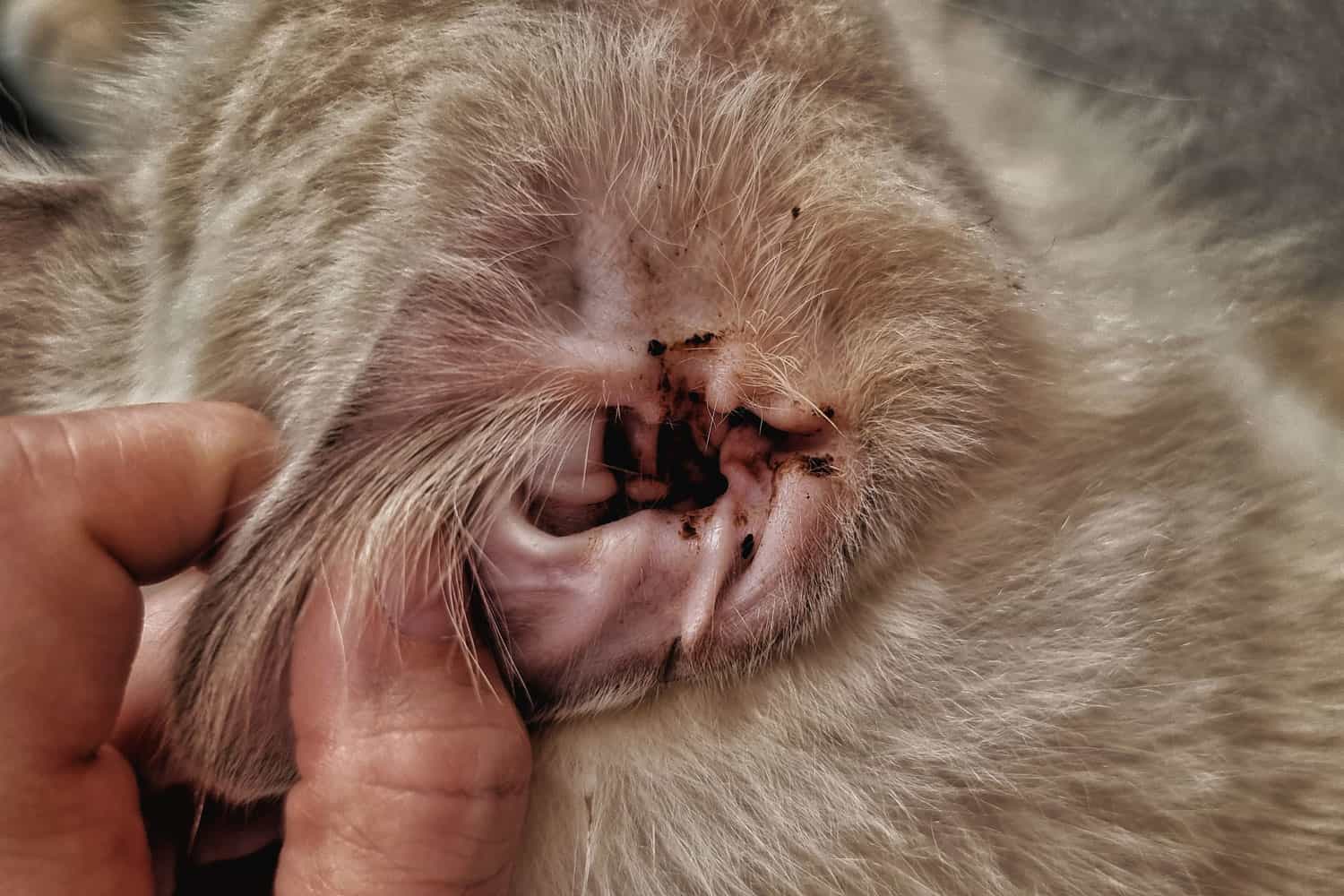
You can't see these little critters, but your cat sure can feel them. They make your kitty scratch their ears and shake their head - it's no fun at all!
But don't worry, we've got the scoop on these pesky mites and how to send them packing. So stick around, and let's dive into the world of ear mites in cats. We've got your back, and your cat's ears too!
What Are Ear Mites?
Mites are microscopic white insects that might be found on a cat's skin or inside its ears.
Ear mites are a specific kind of this insect, which infects cats' ears. Their Latin name is "Otodectes Cynotis" and they are quite common.
There are other kinds of mites that can affect a cat's skin and these are often referred to as mange. The mites themselves are invisible to the naked eye.
A veterinarian can make an accurate diagnosis by taking a sample from the infected area and examining it under a microscope.
You may sometimes be able to observe the mites at home by taking a bit of the "dirt" in the cat's ear, placing it on a dark surface, and looking at it through a high-quality magnifying glass or a simple microscope.
Symptoms Of Ear Mites In Cats
Ear mites not only generate irritation and scratching but also increase the secretion of earwax, which can make the inside of the ear look dirty.
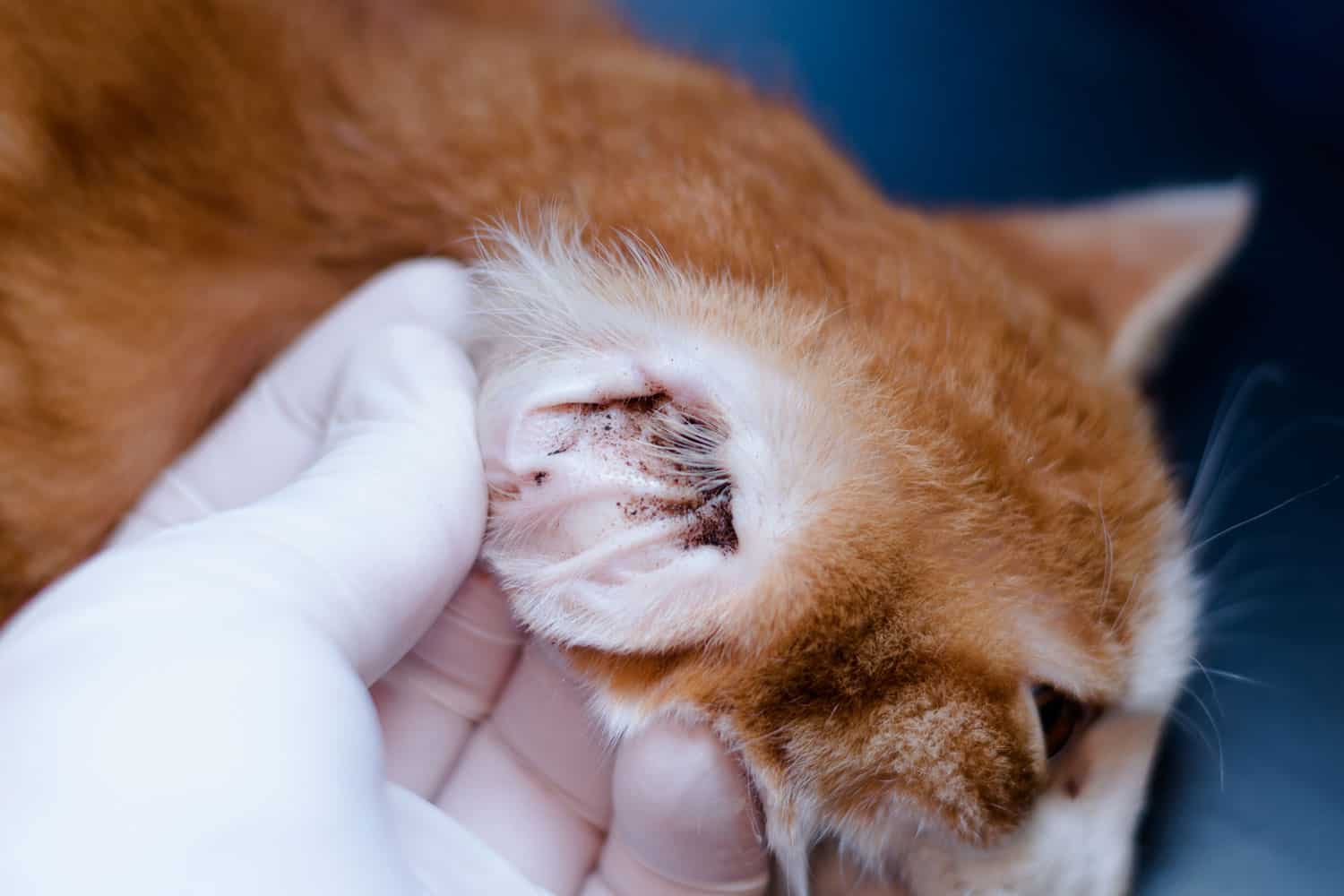
The cat then tends to scratch its ears and shake its head. Secondary bacterial or fungal infections may be created in the ears as well.
Stray cats and kittens are especially susceptible to ear mites. Ear mites are very infectious between cats and dogs - cats in pet shops are often infected with the parasite.
Treatment Of Ear Mites In Cats
When dealing with ear mites in cats, it's important to follow a systematic approach to ensure the mites are effectively eradicated and the cat's discomfort is minimized.
The following steps provide a comprehensive guide on how to correctly diagnose, treat, and prevent ear mites in cats.
This process involves professional vet consultation, careful cleaning, medication application, and managing the cat's reactions during treatment.
Remember, if you have other pets at home, they should also be checked as mites can spread easily between animals.
1. Obtain a Veterinarian Diagnosis
Before initiating any treatment for mites, it's crucial to have a professional diagnosis from a veterinarian.
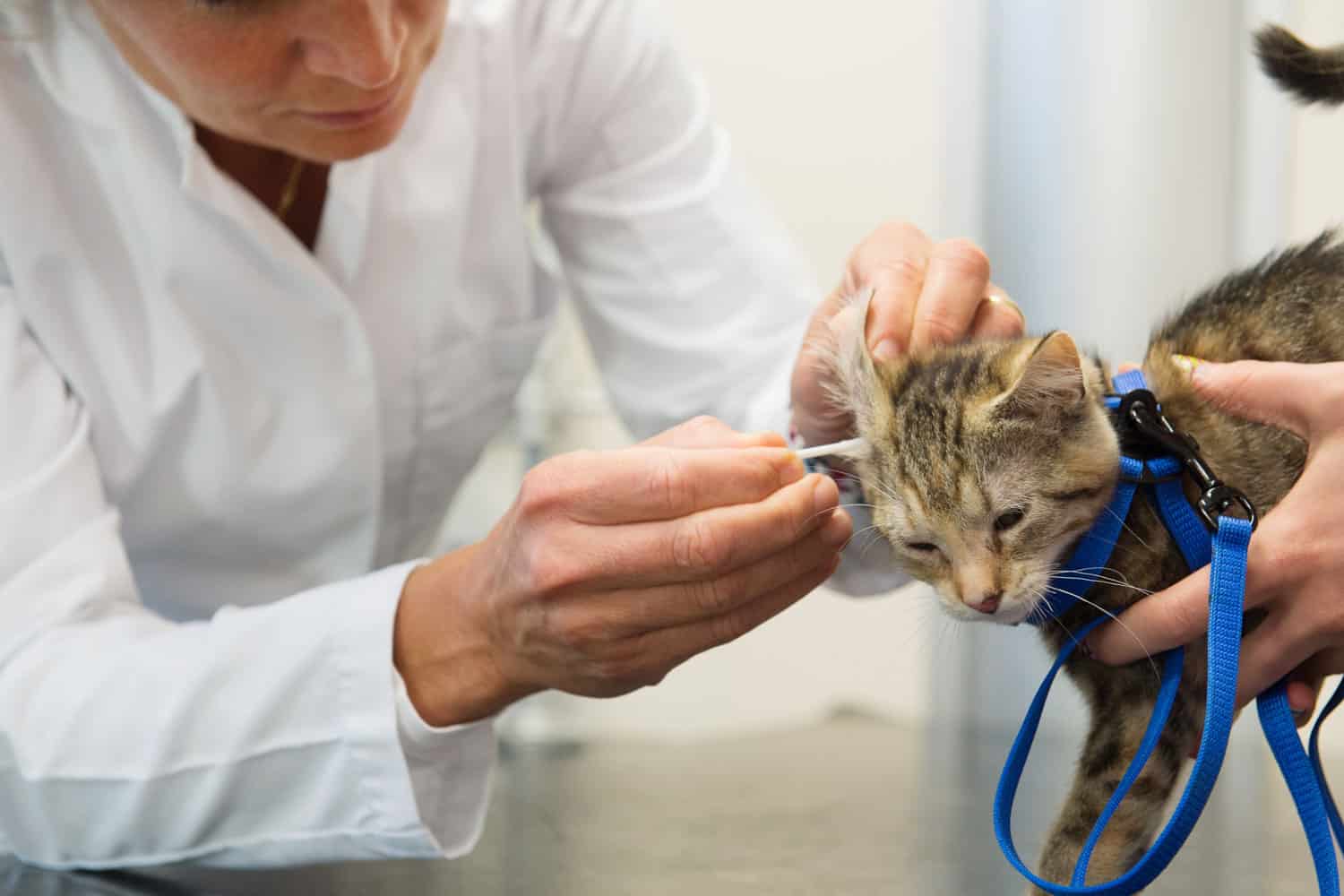
The symptoms of mites can be similar to other ear conditions, and a proper diagnosis ensures you're treating the right issue.
SIGN UP FOR THECATSITE'S EMAIL UPDATES >
2. Avoid Unnecessary Anti-Mite Preparations
If the diagnosis confirms there are no mites, avoid using anti-mite preparations.
These could potentially aggravate an existing infection in the cat's ear. Always follow the veterinarian's recommendations for treatment.
3. Treat Skin Mites with Medical Shampoo
If the cat has mites on its skin, the treatment usually involves the application of a medical shampoo. This should be done under the supervision of a veterinarian to ensure safety and effectiveness.
4. Obtain Special Eardrops for Ear Mites
Ear mites are generally treated with special eardrops that can be procured from a veterinarian or some pet shops. Make sure you understand the instructions for use.
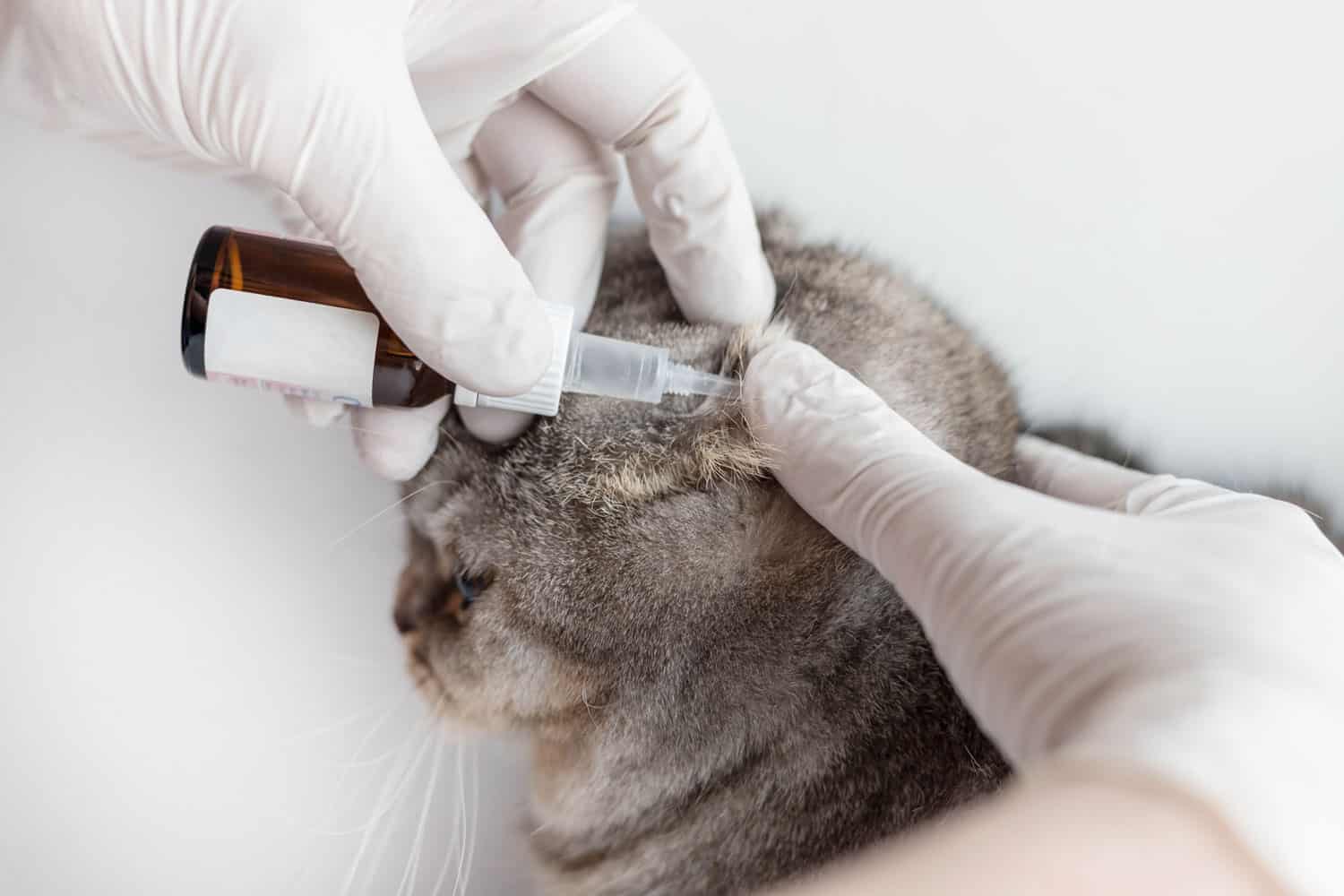
5. Clean the Ears Before Treatment
Before applying the eardrops, it's important to clean the cat's ears. Clean ears ensure the drops can directly affect the mites, improving the effectiveness of the treatment.
6. Use a Special Solution for Ear Cleaning
To clean the outer part of the ear, use a piece of cotton wool dampened with a special solution designed for cleaning cats' ears. The solution helps remove debris and prepare the ear for treatment.
7. Clean Outer Ear Folds with Q-Tips
For the folds of the outer ear, Q-tips soaked in the ear-cleaning solution can be used.
However, caution is necessary to avoid inserting the Q-tip into the inner parts of the ear, which can cause damage.
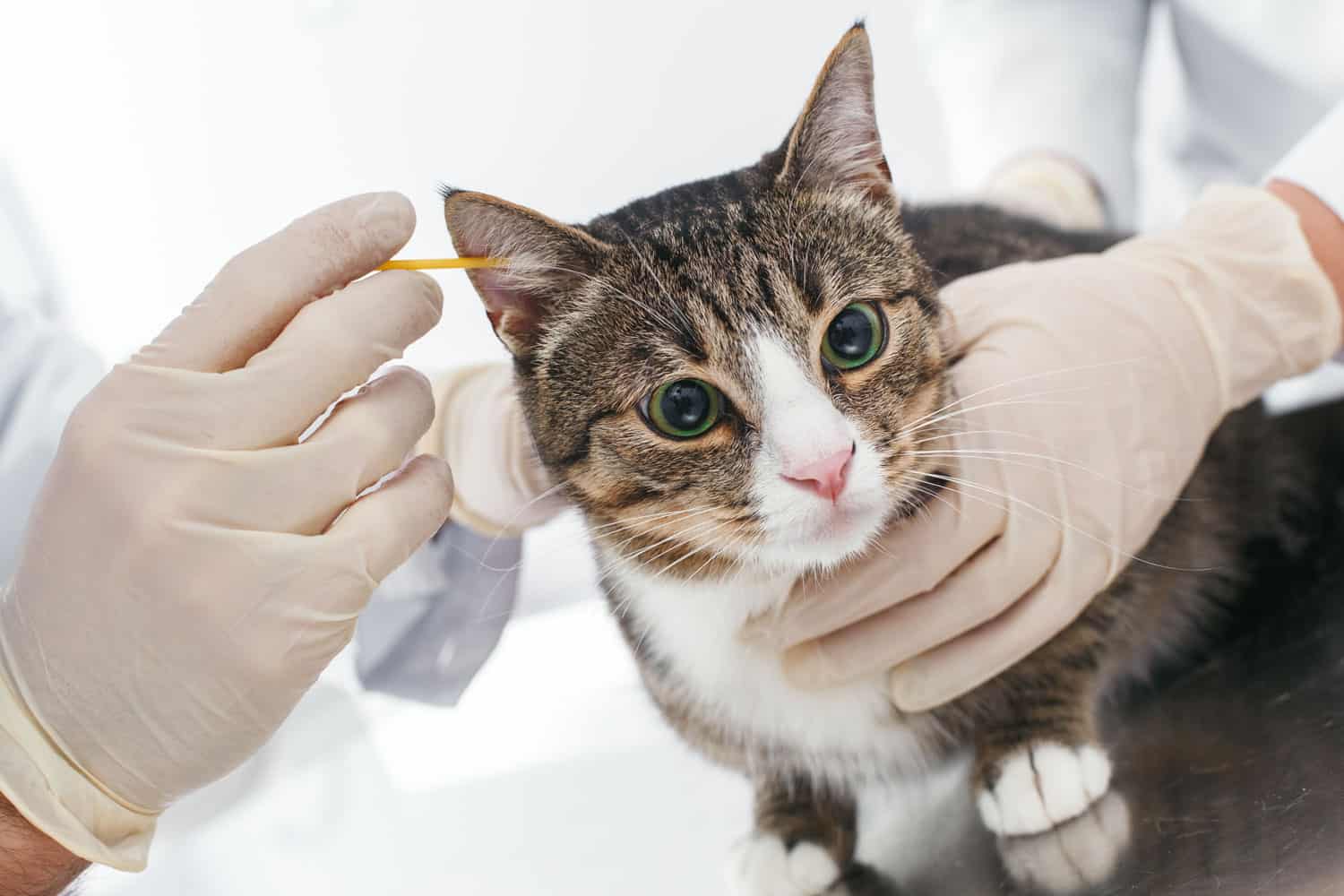
8. Apply Anti-Mite Medication
Once the ears are clean, apply several drops of the anti-mite medication to each ear. Your veterinarian will provide guidance on the precise dosage and frequency of application.
9. Prevent the Cat from Shaking Out Medication
Cats may try to shake out the medication immediately after application.
To prevent this, hold the cat firmly and keep its ear closed. Gently massage the ear for several seconds to help the medication penetrate deeper.
10. Prepare for Possible Medication Expulsion
Despite your best efforts, some of the medication may still be expelled from the cat's ears. To avoid potential stains, don't wear your best clothes during this procedure.
11. Handle Violent Reactions Carefully
If your cat reacts violently—perhaps because the medication stings—use a heavy towel to immobilize its legs. This can protect you from scratches and can also help to soothe the cat.
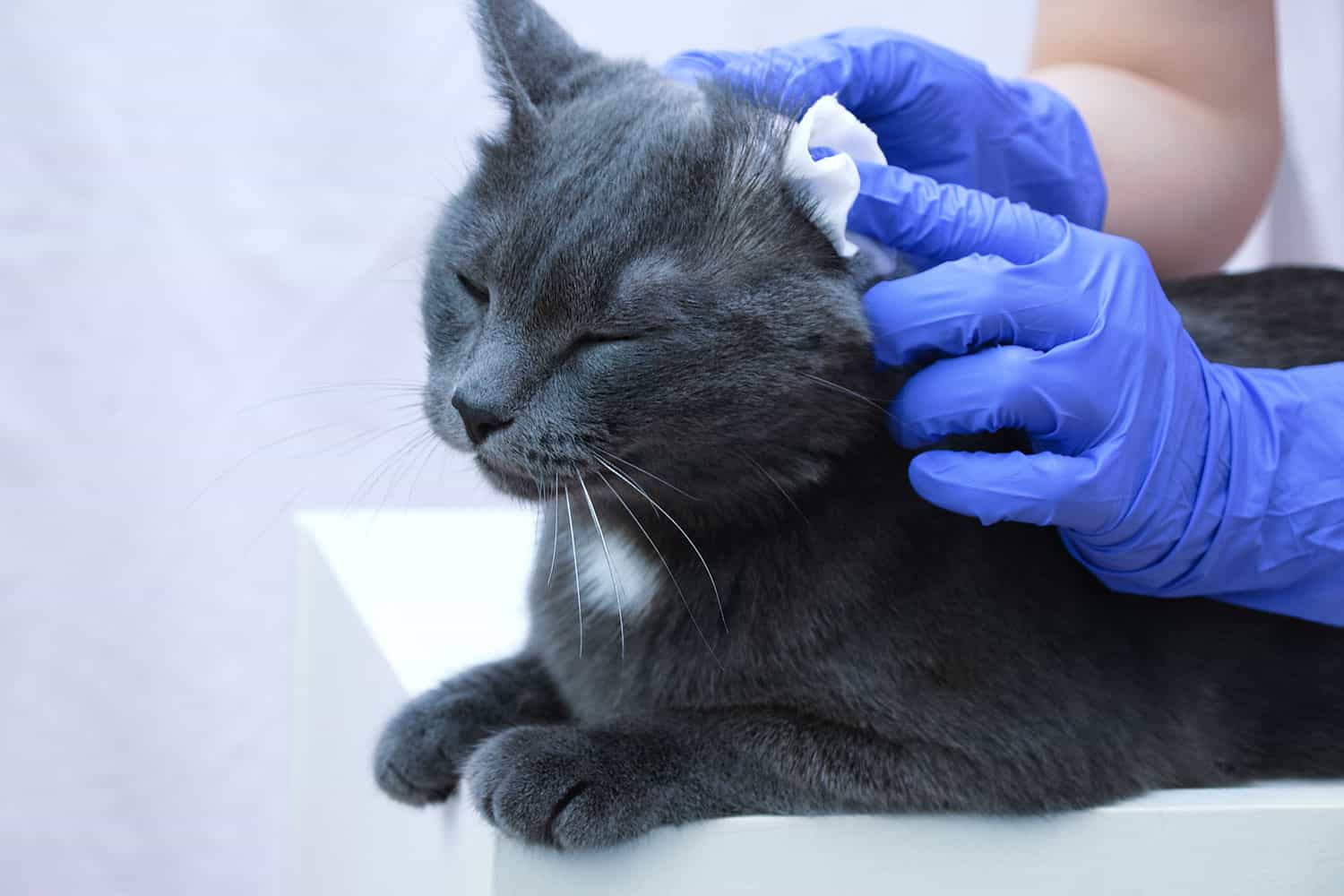
12. Soothe the Cat Throughout the Procedure
Speaking to your cat in a soothing voice throughout the procedure can help keep it calm. This makes the process easier for both you and your cat.
13. Check Other Pets for Mites
Finally, keep in mind that mites can be transmitted from cats to dogs.
Therefore, it's important to have any other cats or dogs in the house examined for mites and treated simultaneously, if necessary, to prevent re-infestation.
Ear Mites in Cats: Final Notes
Venturing into the world of your cat's ears and the tiny, trouble-causing ear mite is crucial for the well-being of our feline friends.
With proper knowledge and professional assistance, treating ear mite infestations becomes a manageable task.
Remember, prevention is key. Regular grooming, routinely inspecting your cat's ears, and maintaining a clean environment can help prevent an outbreak.
If ear mites do appear, patience and consistency in treatment are vital for success. While the process might be tiresome, the outcome—a mite-free, healthy, and comfortable cat—makes it all worthwhile.
Don't forget that ear mites can easily spread among pets. Ensuring all household animals are checked and treated if necessary is crucial.
Together, we can keep our pets healthy and free from the discomfort caused by these pesky pests.
Comments? Leave them using the form below. Questions? Please use the cat forums for those!
SIGN UP FOR THECATSITE'S EMAIL UPDATES >
Don’t miss out on our pawsome collection of articles below, filled with feline-friendly tips and advice. Your kitty companion will be furr-ever grateful!
How Much Time Does It Take To Care For A Cat?
9 Grass Growing Kits That Will Make Your Cat Happy
Note: We may get commissions for purchases made through links on this page.





16 comments on “Ear Mites In Cats – Decoding The Itch And How to Stop It”